Silver prices, like other precious metals, have not performed well of late. Prices consolidated nearby $16,50 per ounce from February to June. During this period there were two jumps related to an increase of a risk aversion in the world, but those rises did not turn out sustained. Moving forward, prices failed to resist mounting selling pressure last month. There is no doubt that the latest appreciation of the US dollar played a significant role lessening silver’s mojo.
What’s interesting, taking into account that silver is perceived by market participants as a safe haven one should count on a rally being driven by simmering risks related to trade frictions, but it has yet to transpire. And, despite those risks we may see remarkably cheap precious metals, cheap currencies such as the yen or franc and equity markets remaining at the elevated levels (except for Chinese equities). Moreover, the weaker China’s yuan should be seen as a warning sign too. The last decrease of silver prices coincided with the strong devaluation of the renminbi.
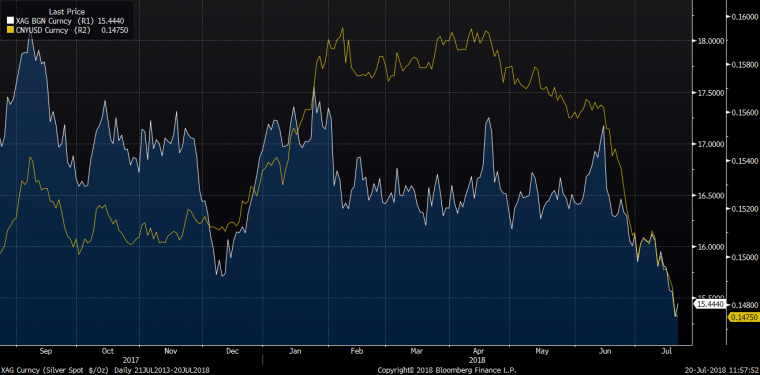
Should the weaker yuan be a warning sign for the markets? The above chart does not confirm this. Source: Bloomberg
How does the fundamental backdrop of the silver market actually look? The answer is not unequivocal. Bear in mind that if the outlook looks hideous and buyers vanish from the market, a tipping point might be just around the corner, and this could be the story for silver prices. Having it in mind let’s whip through demand and supply trends. What do they tell us?
- The decrease of mine production (expectations are not so upbeat though),
- The significant decline of production coming from recycled silver over the past years,
- The overall decrease of gold supply,
- The ongoing deficit on the market, but definitely lower than in previous years,
- The rebound in jewellery demand (still low interest from China and India).
What is the paramount point in each Gold Institute’s report? Positions such as industrial demand should be under particular scrutiny of investors as this kind of demand accounts for over 50% of the global demand. Rising industrial demand stems mainly from increasing application of silver in photovoltaics. The increase totalled all but 20% YoY in 2017. Buyers may look for positive signals elsewhere as well e.g. in electric cars’ producers. Having said that, the investment demand tells us completely different story. We mean investments in physical metal as well as ETP funds which basically did not increase their silver holdings in the previous year.
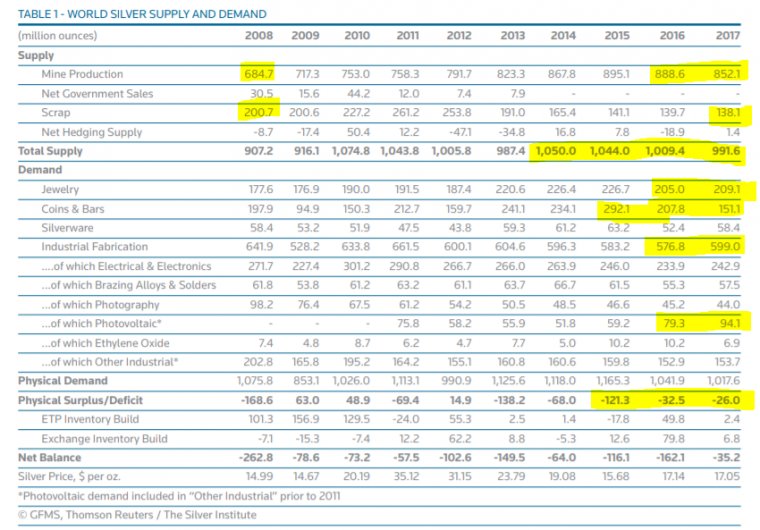
The demand outlook for electric cars and photovoltaics looks fairly encouraging. Jewellers and precious metal investors could want to purchase more silver too. However, these are the long-term conclusions. Source: Silver Institute
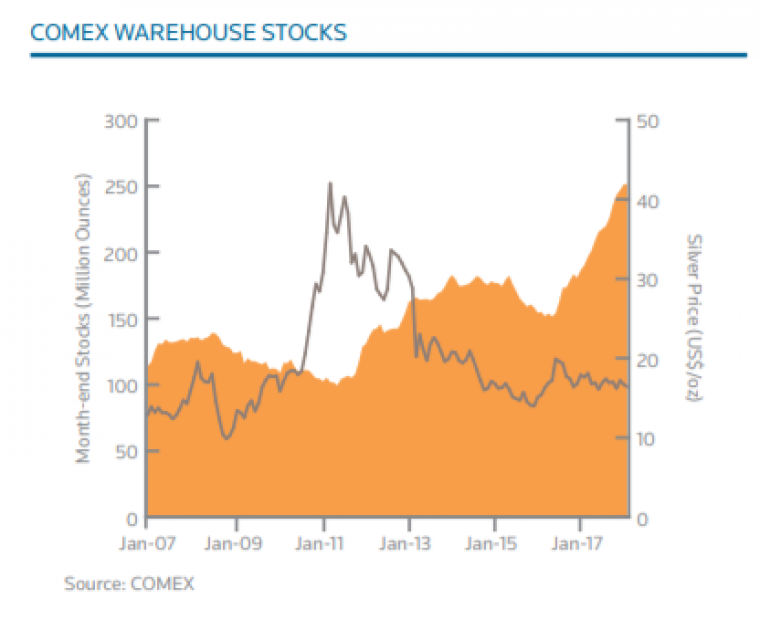
Despite a deficit in the silver market, stocks on exchanges keep increasing. Theoretically, it is not a good signal for prices taking into account the weakish investment demand. Source: Silver Institute
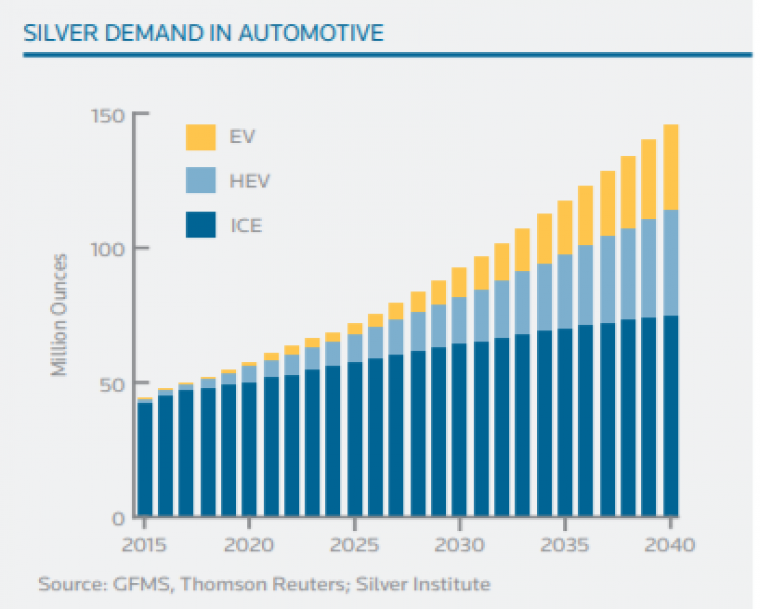
The Reuters’ projections point to the tremendous rise of silver demand in the oncoming years. Nevertheless, again this is the very long-term bullish (and uncertain) factor. A chunk of this increase is assigned to photovoltaics. Source: Silver Institute
As far as the supply side is concerned the outlook does not look so promisingly for silver prices. Top 21 silver mines are going to increase extraction by roughly 2% this year and by 12% in 2019 on a yearly basis. Silver production for these companies is the core business. However, it is worth noticing that for many companies silver extraction is not the prime activity as they focus on e.g. copper extraction and therefore silver production costs for some of them might be even negative (these producers are known as non-primary). According to Bloomberg, these kind of producers are to increase production around 1% this year. What’s more, making a thorough analysis of the cost curve it turns out that over 95% of current production is profitable despite a heavy slump in silver prices we’ve seen recently. The curve tells us that silver prices might be acceptable by a majority of producers even to $10 which is viewed as a turning point. Crossing this level would result in serious issues faced by silver producers (such difficulties were already seen in the nickel market, where at one time only ⅓ of production was profitable).
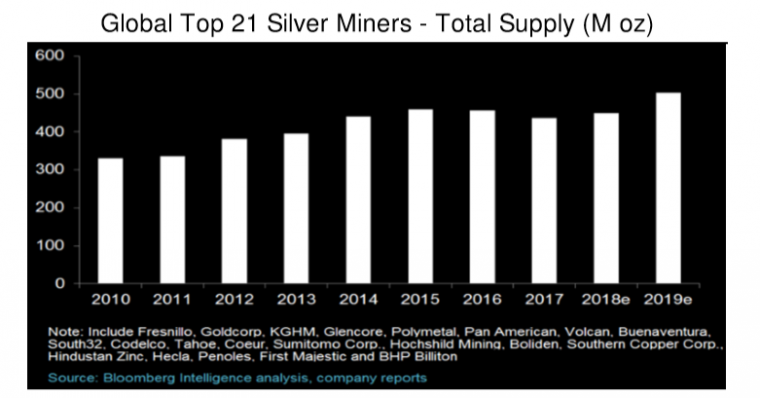
The silver producers are going to increase output. Source: Bloomberg
Trade wars and inflation could be a chance for silver
The relationship between inflation and commodity prices seems to be fairly straightforward - the higher price growth the increased demand for commodities (investors want to salvage real value of their assets). Therefore continued global inflation growth should be supportive of commodities and this is especially true in case of precious metals. Apart from this, we are facing rising upward pressure on prices all around the world stemming from trade wars. Moreover, the simmering trade war between the US and China could encourage to depreciate domestic currencies in order to offset a burden coming from tariffs (essentially China has already undertaken such moves pushing the onshore yuan much lower against the US dollar and other currencies too). Moves aimed at depreciating currencies could incentivize investors to protect against these decreases (buying precious metals is one of the most obvious manner to do so). In turn, global economic slowdown may also prompt monetary authorities in some countries to improve liquidity conditions which would be precious metals positive.
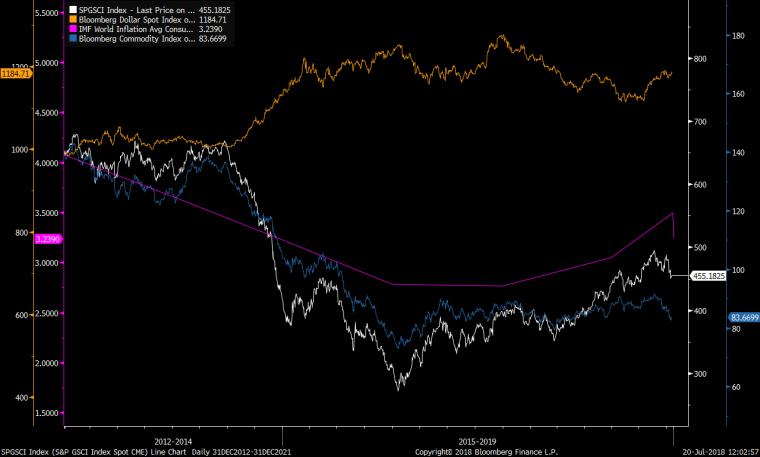
Continued global inflation growth could be a positive sign for metal prices. Source: Bloomberg
Could we count on a speculative rebound in silver? In our opinion, there are not too much reasons to think in this way. The current positioning data does not imply any bounce in silver prices as the commodity is still quite a long way off from the oversold area. What’s more, nowadays only the long-term factors may herald a rebound in silver prices. In general, a chunk of demand for silver is strictly tied to the global economy’s performance and on that account copper prices could come in handy in predicting silver prices (the higher demand for copper tends to coincide with the similar scenario in silver).
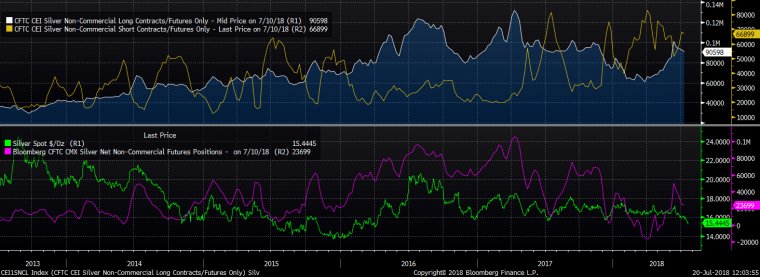
The positioning does not appear to be supportive of silver prices. Source: Bloomberg
Putting all the above-mentioned together we would recommend seeking better entry levels considering a long. Alternatively one may consider a buy stop order at around 15.90 with a target at 17.00 and a stop loss at 15.50.
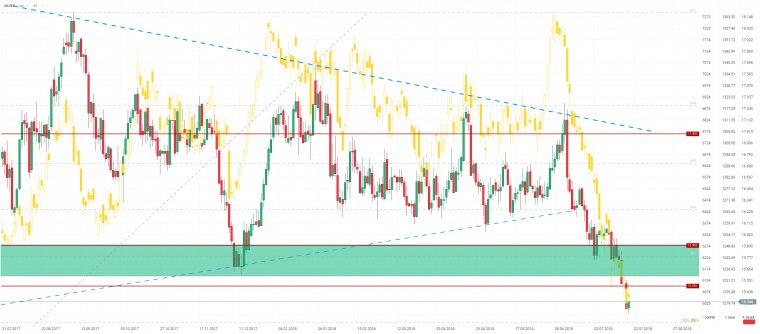
Another return of silver prices to the demand area (the green rectangle) could be silver positive, but as for now we do not see many reasons behind a more long-lived rebound. Source: xStation5
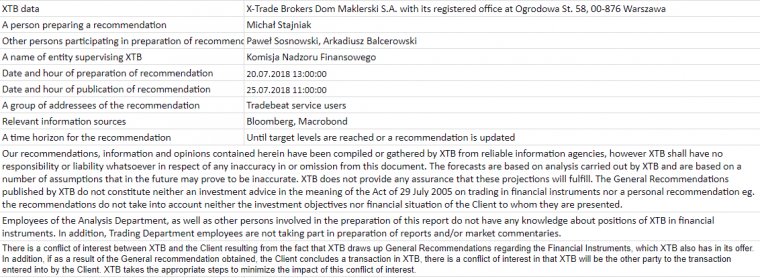
Disclaimer
This article is provided for general information purposes only. Any opinions, analyses, prices or other content is provided for educational purposes and does not constitute investment advice or a recommendation. Any research has not been prepared in accordance with legal requirements designed to promote the independence of investment research and as such is considered to be a marketing communication. Any information provided does not have regard to the specific investment objectives, financial situation and needs of any specific person who may receive it.
Past performance is not necessarily indicative of future results, and any person acting on this information does so entirely at their own risk, we do not accept liability for any loss or damage, including without limitation, any loss of profit, which may arise directly or indirectly from the use of or reliance on such information.


